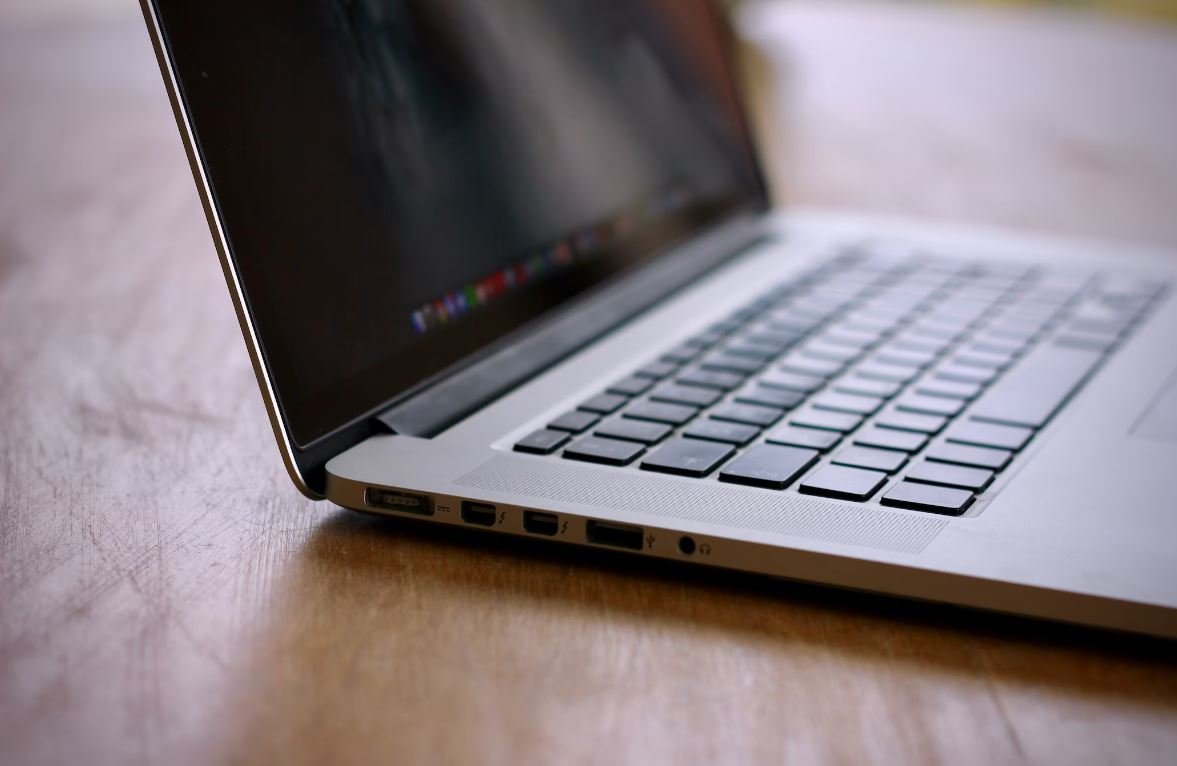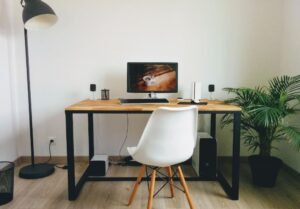What Are the Top AI Art Generators?
Artificial Intelligence (AI) has rapidly evolved in recent years, and one of its fascinating applications is in the field of art. AI art generators, also known as AI art bots, have gained considerable popularity as they can produce stunning artwork that rivals creations made by human artists. These AI systems utilize machine learning techniques to analyze vast amounts of artistic data and generate unique and original visual pieces. In this article, we will explore some of the top AI art generators that are transforming the art world.
Key Takeaways:
- AI art generators use machine learning techniques to create unique and original artwork.
- These AI systems analyze vast amounts of artistic data to generate visual pieces.
- AI art tools can be used by both professional artists and enthusiasts.
1. DeepArt
DeepArt is a popular AI art generator that allows users to transform their photos into stunning artworks inspired by famous artists and art styles. Users can simply upload their images to the DeepArt platform, select a style, and let the AI algorithm do the rest. DeepArt’s algorithm applies complex neural networks to analyze the image and recreate it in the selected artistic style, producing impressive and personalized art pieces.
For instance, a regular photo of a cityscape can be transformed into a breathtaking painting resembling Van Gogh‘s Starry Night or Picasso’s Cubism style. This fusion of unique styles and personal images creates visually striking artwork that celebrates the intersection of art and technology.
2. Runway ML
Runway ML is an AI art platform that empowers creators to experiment and explore different artistic possibilities. It offers a range of AI models and tools that artists can leverage to generate captivating artworks. These models cover various creative domains, such as image synthesis, image-to-image translation, and style transfer.
By using Runway ML, artists can easily experiment with different AI algorithms to bring innovative ideas to life. They can manipulate images, apply different styles, and create entirely new visual concepts. This platform opens up endless artistic possibilities and encourages artists to push boundaries and think outside the box, fostering a new era of AI-enhanced art creation.
3. DeepDream
DeepDream is an AI art project developed by Google. With DeepDream, users can create surreal and dream-like images by applying deep neural network algorithms to existing pictures. The AI algorithm identifies patterns and shapes in the input images and enhances them, resulting in psychedelic and visually captivating compositions.
One interesting application of DeepDream is its ability to generate artwork from photographs. By processing regular photos through DeepDream’s neural networks, users can obtain unique and mesmerizing visual transformations. This AI art generator offers a glimpse into the potential of AI to reimagine reality and create mind-bending art experiences.
Summary
In the rapidly evolving field of AI art, AI art generators are revolutionizing the way we create and appreciate visual art. These tools enable both professional artists and art enthusiasts to explore new frontiers in artistic expression. From transforming photos into art masterpieces to creating surreal dream-like images, the top AI art generators showcased in this article exemplify the power of AI in pushing the boundaries of creativity.

Common Misconceptions
Misconception 1: AI Art generators lack creativity
It is a common misconception that AI art generators lack creativity and are merely replicating existing artworks. However, AI art generators are capable of producing unique and original pieces that go beyond simple replication.
- AI art generators utilize complex algorithms to create new and innovative art pieces
- These generators can combine different artistic styles or even invent entirely new styles
- They can provide fresh perspectives and unique interpretations of traditional art forms
Misconception 2: AI art generators replace human artists
Another misconception is that AI art generators are here to replace human artists. While AI can certainly assist and complement the artistic process, it is unlikely to completely replace the human element in art creation.
- AI art generators are tools that can be used by artists to enhance and expand their creativity
- Human artists bring emotions, intent, and personal experiences that AI cannot replicate
- Collaboration between AI and human artists can lead to exciting and unique creations
Misconception 3: AI art generators produce low-quality art
Some people believe that AI art generators only produce low-quality art with no aesthetic value. However, AI art generators are capable of creating high-quality artworks that can rival those produced by human artists.
- AI art generators can produce intricate and visually appealing compositions
- They can create art with a high level of detail and precision
- AI algorithms can be tailored to produce art that adheres to specific artistic principles and preferences
Misconception 4: AI art generators are easy to use
Contrary to popular belief, using AI art generators is not a straightforward and simple process. It requires a certain level of technical knowledge and expertise to operate these tools effectively.
- AI art generators often require input and guidance from the user to achieve desired outcomes
- Understanding how to optimize the algorithms and parameters can greatly impact the quality of the generated art
- Experience and experimentation are necessary to fully explore the capabilities and limitations of AI art generators
Misconception 5: AI art generators are a threat to the art world
Some people fear that AI art generators pose a threat to the traditional art world. However, AI art should be seen as a complement and an expansion of artistic possibilities rather than a replacement or threat.
- The presence of AI art can encourage new and alternative artistic practices
- AI-generated art can serve as a source of inspiration for human artists
- The art world can embrace AI as a tool to push boundaries and explore new frontiers of creativity

The Rise of AI Art Generators
As artificial intelligence advancements continue to reshape various industries, the world of art is no exception. AI-powered systems capable of generating unique and captivating artistic creations have gained significant attention and popularity. The following tables provide captivating insights into some of the top AI art generators and their notable features.
Art Generator 1: NeuralStyle
NeuralStyle is an AI art generator that utilizes deep learning algorithms to transform ordinary images into stunning artistic masterpieces. With its ability to imitate the style of famous artists, NeuralStyle has become a favorite among art enthusiasts seeking to add a touch of elegance to their photographs.
Art Generator 2: DeepArt.io
DeepArt.io is a powerful AI tool that generates unique and visually appealing artworks by analyzing the content and style of input images. Through its neural network architecture, DeepArt.io enables users to explore endless possibilities in creating personalized and distinguishable art pieces.
Art Generator 3: RunwayML
RunwayML offers artists and designers an immersive AI art generation experience by providing a user-friendly platform that harnesses machine learning algorithms. By leveraging RunwayML’s extensive library of models, individuals can create diverse and innovative pieces that embrace the fusion of art and technology.
Art Generator 4: DALL·E
DALL·E, developed by OpenAI, showcases the incredible potential of AI in generating unique images from text descriptions. This cutting-edge AI art generator combines natural language processing and deep learning to create impressive visuals that align with the provided textual input.
Art Generator 5: AIVA
AIVA is an AI composer and musician that creates breathtaking musical pieces in various genres. By leveraging deep learning algorithms, AIVA can produce original compositions, offering artists and music enthusiasts an endless source of inspiration and creativity.
Art Generator 6: Gaugan
Gaugan, developed by NVIDIA, is an AI art generator that specializes in creating hyperrealistic landscapes from rough sketches or simple descriptions. With its advanced generative adversarial network (GAN) model, Gaugan can transform basic drawings into vibrant and immersive scenery.
Art Generator 7: Prisma
Prisma has gained widespread acclaim for its AI-powered image filters that emulate various art styles with striking accuracy. By combining computer vision and deep learning, Prisma enables users to transform their ordinary photos into stunning artworks reminiscent of renowned artists’ signature styles.
Art Generator 8: Artbreeder
Artbreeder is a fascinating AI art generator that allows users to merge and manipulate existing artwork to create entirely new and unique pieces. By employing a collaborative approach, Artbreeder enables the exploration of countless artistic directions, resulting in mesmerizing and one-of-a-kind compositions.
Art Generator 9: DeepDream
DeepDream, a Google AI project, employs neural networks to generate dreamlike and surreal visual representations. By amplifying and enhancing patterns within images, DeepDream creates captivating and often psychedelic transformations, opening new doors for artistic expression and interpretation.
Art Generator 10: StyleGAN
StyleGAN, developed by NVIDIA, is a revolutionary AI art generator that excels in synthesizing hyperrealistic human faces, animals, and fictional characters. By merging deep learning techniques with generative adversarial networks, StyleGAN offers artists and creatives an unparalleled level of realism, pushing the boundaries of what AI art can achieve.
In conclusion, the world of AI art generators is evolving rapidly, pushing the boundaries of what is possible in the realm of artistic expression. These ten AI tools and platforms exemplify the remarkable capabilities of artificial intelligence in creating visually stunning and thought-provoking artworks. Whether it be transforming images into masterpieces, composing unique music, generating landscapes, or creating surreal visuals, AI art generators are revolutionizing the way we perceive and engage with art.
Frequently Asked Questions
What are AI art generators?
AI art generators are computer programs that use artificial intelligence (AI) algorithms to automatically create artworks, such as paintings, drawings, or other visual art forms. These algorithms analyze existing artworks, learn their patterns and styles, and generate new images based on this knowledge.
How do AI art generators work?
AI art generators typically employ techniques such as deep learning, neural networks, and generative adversarial networks (GANs). These AI algorithms are trained on large datasets of existing artworks, allowing them to learn the patterns, styles, and structures of different art forms. Once trained, the AI can generate new images based on this learned knowledge.
What are some popular AI art generators?
There are several popular AI art generators available today. Some notable examples include DeepArt.io, ArtBreeder, RunwayML, and Deep Dream Generator. Each of these platforms offers unique features and capabilities for creating AI-generated artworks.
Can AI art generators create original art?
While AI art generators can generate visually appealing and unique artworks, the debate over the originality of these creations is ongoing. Some argue that AI-generated art lacks the emotional depth and intentionality of human-created art, while others see it as a new form of creativity that reflects the collaborative effort between humans and machines.
Are AI art generators capable of creating high-quality art?
AI art generators have made significant advancements in recent years and are now capable of producing high-quality art. However, the output quality may vary depending on factors like the training data used, the complexity of the desired art style, and the AI algorithm employed. Some AI art generators also allow users to refine and customize the generated artworks to enhance their quality.
Can AI art generators replace human artists?
AI art generators are tools that can assist and inspire human artists, but they cannot completely replace the creativity and personal expression of human artists. AI algorithms lack the subjective experiences and emotions that drive artistic creation. Instead, AI art generators serve as a medium for artists to collaborate with technology and explore new possibilities in their creative processes.
What are the ethical considerations of AI art generators?
AI art generators raise various ethical considerations. These include questions about authorship, ownership, and copyright of AI-generated artworks. Additionally, there are concerns about AI-generated content being used to deceive or manipulate viewers. Understanding and addressing these ethical concerns is crucial in the development and use of AI art generators.
Can AI art generators learn to create different art styles?
Yes, AI art generators can learn to create different art styles by training on datasets that represent those styles. By exposing the AI algorithms to a diverse range of art styles during the training phase, the generators can learn to mimic and generate artworks in those styles. This flexibility allows artists and users to explore and experiment with various artistic expressions.
Are there any limitations to AI art generators?
AI art generators have certain limitations. They are reliant on the quality and diversity of the training data, which can influence the generated output. The algorithms might also struggle with more abstract or avant-garde art styles that deviate from the patterns found in the training data. Additionally, the creative decision-making process and emotional depth of human artists are challenging for AI to replicate fully.
Can AI art generators be used for commercial purposes?
Yes, AI art generators can be used for commercial purposes. Many artists and designers utilize AI-generated art in various commercial applications, such as advertising, marketing, book covers, and interior design. However, it is essential to consider legal and ethical implications, such as copyright and intellectual property rights, when using AI-generated artworks commercially.




